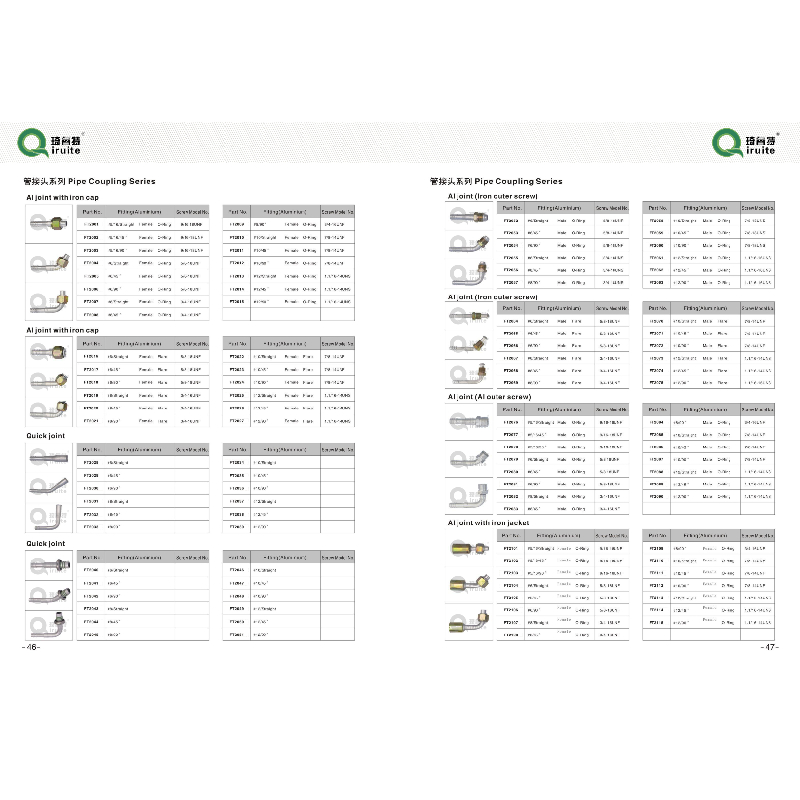Quick Release Ball Joint - Tool-Free, Durable, Precise
Quick-release ball joints for fluid lines: field notes from the shop floor
If you’ve ever wrestled a hose in a tight engine bay, you know why a Quick Release Ball Joint style coupling makes life easier. The unit I’ve been looking at lately comes out of Ningjin County, Hebei—an area that (quietly) turns out a lot of the fittings you’ll see on mid-volume OEM assemblies. And yes, it’s aluminum, O-ring boss, 9/16-18 UNF. Familiar, but with a neat quick-couple feel.

What’s trending (and why it matters)
Two trends keep popping up: tool-less or low-tool servicing, and leak-tightness under vibration. The Quick Release Ball Joint approach answers both: swivel-friendly alignment reduces cross-threading, and the O-ring boss keeps a tight seal as assemblies shift. Many customers say maintenance time drops—sometimes by half—when technicians aren’t fighting misalignment.
Core specs (real-world friendly)
| Part No. | Geometry | Tube Size | Port Thread | Body Material | Seal |
|---|---|---|---|---|---|
| FT2001 | #5/16 Straight Female | 5/16 in (≈7.94 mm) | 9/16-18 UNF (ORB) | Aluminium | O-ring (NBR/optional FKM) |
| FT2002 | #5/16 45° Female | 5/16 in | 9/16-18 UNF (ORB) | Aluminium | O-ring |
| FT2003 | #5/16 90° Female | 5/16 in | 9/16-18 UNF (ORB) | Aluminium | O-ring |
Note: dimensions and performance in real-world use may vary with tube hardness, media, and assembly torque.
Process flow, testing, and service life
- Materials: Aluminium body (ASTM B221-grade alloy), nitrile O-ring standard; FKM optional for higher temp.
- Methods: CNC turning, precision threading (9/16-18 UNF), deburr, clean, optional anodize for corrosion resistance.
- Testing: ORB sealing per SAE J1926 practice; vibration and impulse to ISO 8434 guidance; salt spray to ISO 9227 (≈96–240 h depending on finish).
- Service life: typically thousands of connect/disconnect cycles; to be honest, media and torque discipline decide the upper limit.
- Industries: mobile hydraulics, HVAC/refrigeration service lines, test benches, agricultural sprayers.
Where it shines
The Quick Release Ball Joint form-factor is fantastic when routing around frames and panels. 45° and 90° options let you correct for tight bends; the swivel-like behavior during assembly reduces side-load on the O-ring, which—surprisingly—cuts weepage over time.
Vendor snapshot (what buyers compare)
| Vendor | Origin | Lead Time | Customization | Certs |
|---|---|---|---|---|
| HoseQRT (Pipe Coupling Type) | Ningjin County, Hebei | ≈2–4 weeks | Angles, O-ring compounds, finish | RoHS/REACH |
| Vendor A | EU | ≈4–6 weeks | Angles, materials | RoHS, ISO 9001 |
| Vendor B | US | Stock/≈2 weeks | Limited | RoHS |
Customization, feedback, and a quick case
Options include 45°/90° geometry, anodize colors for line coding, and O-rings tailored to media (FKM for oils and higher temp). One HVAC service team told me they cut call-backs after switching to the Quick Release Ball Joint 90°—less stress on the seal during routine filter changes.
Test snapshot (typical, lab conditions): helium leak ≤1×10⁻³ mbar·L/s; burst pressure often >4× working pressure for 5/16 lines; torque windows set to SAE J1926 guidelines. Your mileage will vary—document your torque!
Compliance
- Design/fit per SAE J1926 ORB and ISO 8434 concepts.
- Materials can be specified to RoHS and REACH.
- Corrosion validation via ISO 9227 where required.
Citations:
1) ISO 12240-1: Spherical plain bearings — Radial types
2) ISO 8434-1: Metallic tube connections for fluid power and general use
3) SAE J1926: Connections for general use and fluid power — Ports and stud ends with ISO 725 threads and O-ring sealing
4) ASTM B221: Aluminum and aluminum-alloy extruded bars, rods, wire, profiles, and tubes
5) ISO 9227: Corrosion tests in artificial atmospheres — Salt spray tests
6) RoHS Directive 2011/65/EU
7) REACH Regulation (EC) No 1907/2006
-
Quick Release Ball Joint – Tool-Free, Durable, Leak-TightNewsNov.13,2025
-
Spiral Guard Hose Protection — Durable, UV-Resistant WrapNewsNov.13,2025
-
SAE J1401 Brake Hose Specifications: Durable, Low ExpansionNewsNov.13,2025
-
SAE J1401 Brake Hose Specifications | DOT-Approved, DurableNewsNov.13,2025
-
Spiral Guard Hose Protection - Abrasion-Resistant, UV-StableNewsNov.10,2025
-
SAE J1401 Brake Hose Specifications | DOT-Certified, DurableNewsNov.10,2025

